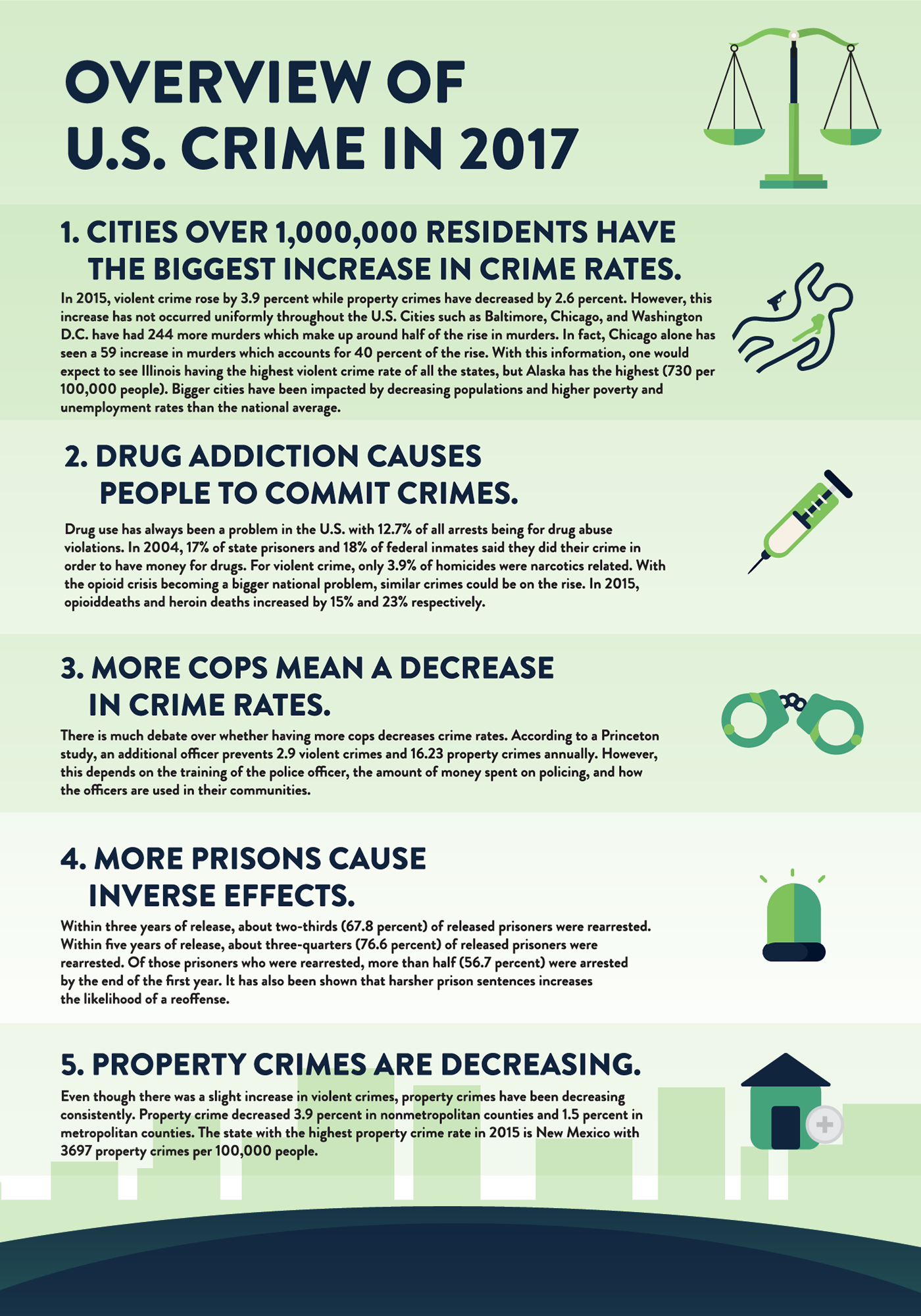
Because crime affects different areas in different ways, looking at and trying to make sense of crime statistics for the population as a whole can be incredibly confusing. After researching a variety of fact sources, we had quite a bit of uncertainty about what these facts actually meant. We wanted to provide clear answers about what might (or might not) be contributing to crime in the U.S.
Below you'll find our summaries of a few of the most frequently cited crime facts. These were drawn from what we deemed to be the most common pattern amongst our sources.

Cities over 1,000,000 residents have the biggest increase in crime rates.
In 2015, violent crime rose by 3.9 percent while property crimes have decreased by 2.6 percent. However, this increase has not occurred uniformly throughout the U.S. Cities such as Baltimore, Chicago, and Washington D.C. have had 244 more murders which make up around half of the rise in murders. In fact, Chicago alone has seen a 59 increase in murders which accounts for 40 percent of the rise. With this information, one would expect to see Illinois having the highest violent crime rate of all the states, but Alaska has the highest (730 per 100,000 people). Bigger cities have been impacted by decreasing populations and higher poverty and unemployment rates than the national average.
Drug addiction causes people to commit crimes.
Drug use has always been a problem in the U.S. with 12.7% of all arrests being for drug abuse violations. In 2004, 17% of state prisoners and 18% of federal inmates said they did their crime in order to have money for drugs. For violent crime, only 3.9% of homicides were narcotics related. With the opioid crisis becoming a bigger national problem, similar crimes could be on the rise. In 2015, opioid deaths and heroin deaths increased by 15% and 23% respectively.
More cops mean a decrease in crime rates.
There is much debate over whether having more cops decreases crime rates. According to a Princeton study, an additional officer prevents 2.9 violent crimes and 16.23 property crimes annually. However, this depends on the training of the police officer, the amount of money spent on policing, and how the officers are used in their communities.
More prisons cause inverse effects.
Within three years of release, about two-thirds (67.8 percent) of released prisoners were rearrested. Within five years of release, about three-quarters (76.6 percent) of released prisoners were rearrested. Of those prisoners who were rearrested, more than half (56.7 percent) were arrested by the end of the first year. It has also been shown that harsher prison sentences increases the likelihood of a reoffense.
Property crimes are decreasing.
Even though there was a slight increase in violent crimes, property crimes have been decreasing consistently. Property crime decreased 3.9 percent in nonmetropolitan counties and 1.5 percent in metropolitan counties. The state with the highest property crime rate in 2015 is New Mexico with 3697 property crimes per 100,000 people.

